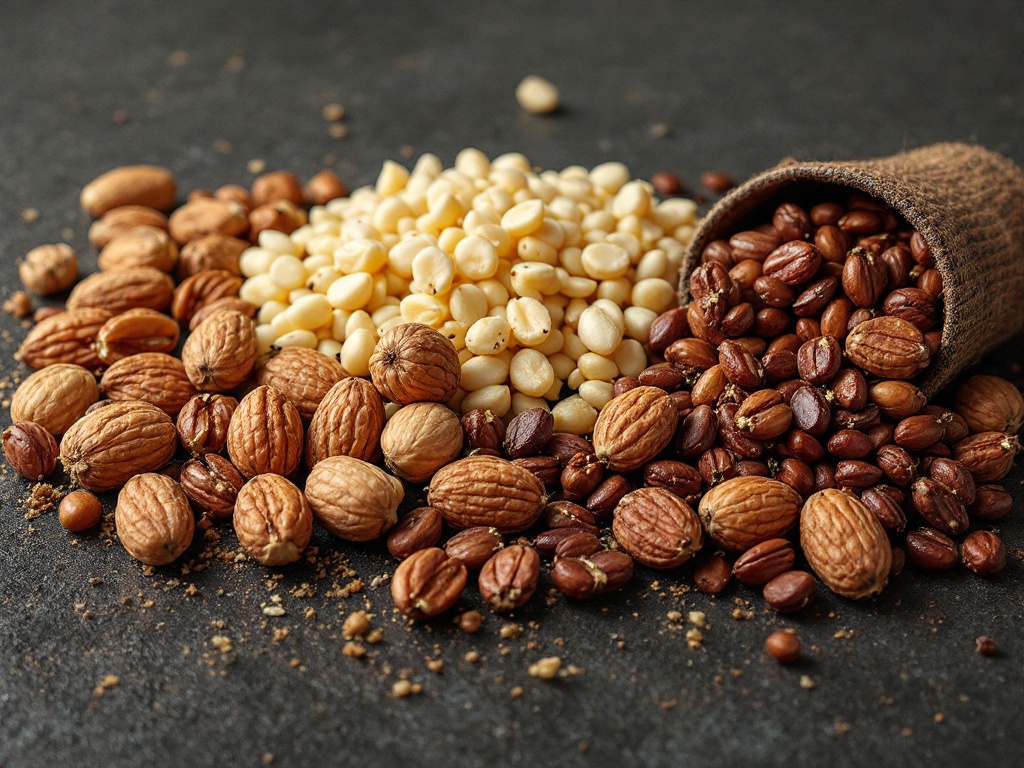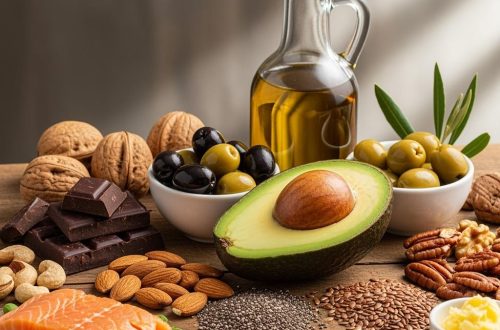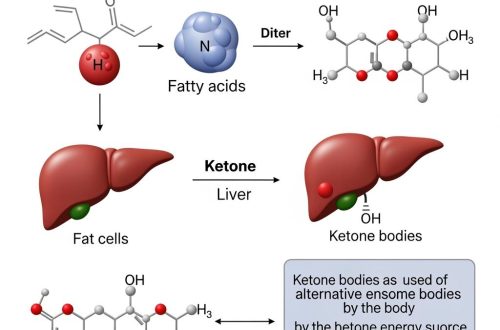So you’ve been hearing all the buzz about the keto diet and maybe you’re thinking about giving it a try. But then you start researching and suddenly realize – wait, there’s not just one keto diet? There are actually several different approaches?
Yep, that’s right. The ketogenic diet isn’t one-size-fits-all, which is actually great news if you’re interested in trying it out but worried that it might be too restrictive for your lifestyle. I’ve spent the last few years experimenting with different keto approaches myself, and I’ve learned that having options makes all the difference in finding a sustainable way to eat.
In this post, I’ll break down the main variations of the ketogenic diet, how they differ, and who might benefit most from each approach. Whether you’re a total newbie or looking to switch up your current keto routine, I hope this guide helps you find your perfect fit.
The Classic Ketogenic Diet (Standard Keto)
Let’s start with the OG keto approach – the standard ketogenic diet (SKD). This is what most people think of when they hear “keto diet.” The macronutrient breakdown typically looks like this:
- 70-80% of calories from fat
- 15-25% of calories from protein
- 5-10% of calories from carbohydrates
Usually, this translates to eating fewer than 50 grams of carbs per day – often closer to 20-30 grams for most people trying to get into ketosis quickly.
The standard keto diet was actually developed back in the 1920s as a treatment for epilepsy and has since been adapted for weight loss and other health goals. By dramatically reducing carbs, your body enters a metabolic state called ketosis, where it burns fat for fuel instead of glucose.
My first foray into keto was with SKD, and I remember how surprised I was at how quickly my body adapted. The first week was rough (hello, keto flu!), but by week two, I noticed significantly more stable energy throughout the day. No more mid-afternoon crashes!
The standard approach works well for people who:
- Are just starting their keto journey
- Have significant weight to lose
- Need a structured plan with clear guidelines
- Don’t have special athletic performance requirements
Targeted Ketogenic Diet (TKD)
After about six months on standard keto, I realized I was struggling with my more intense workouts. That’s when I discovered the targeted ketogenic diet, which adds a small twist to the standard approach.
With TKD, you follow standard keto most of the time, but consume 25-50 grams of fast-digesting carbs right before or right after your workout window. These extra carbs are quickly used up during exercise, so they typically don’t kick you out of ketosis for long.
I found that having those extra carbs around my training sessions made a huge difference in my performance and recovery. I could push harder during high-intensity intervals and didn’t feel completely drained afterward.
The targeted approach is ideal for:
- Regular exercisers who need a performance boost
- Those who have already adapted to standard keto
- People who want to maintain ketosis but need additional energy for workouts
- Weekend warriors who have specific training days
The beauty of TKD is that you still get the benefits of ketosis most of the time, but with better athletic performance when you need it.
Cyclical Ketogenic Diet (CKD)
Taking things a step further from TKD is the cyclical ketogenic diet. This approach involves following standard keto for 5-6 days per week, then engaging in a “carb-loading” phase for 1-2 days.
During the carb-loading days (often weekends), you might consume anywhere from 400-600 grams of carbohydrates. Yes, you read that right! The idea is to temporarily refill muscle glycogen stores completely before returning to ketosis for the next 5-6 days.
I tried CKD for a few months when I was training for a half marathon. The periodic carb refeeds helped with my longer training runs, though I must admit I found it mentally challenging to switch back and forth. Some weeks I would struggle to get back into ketosis after the carb-up days.
CKD tends to work well for:
- Serious athletes and bodybuilders
- Those with experience following strict keto protocols
- People who can mentally handle the on/off approach
- Individuals who miss higher-carb foods and want scheduled breaks
It’s worth noting that CKD isn’t recommended for beginners or those primarily focused on weight loss, as the constant in-and-out of ketosis can slow progress and make adaptation more difficult.
High-Protein Ketogenic Diet
The high-protein ketogenic diet modifies the standard approach by increasing protein intake. The macros typically look like:
- 60-65% fat
- 30-35% protein
- 5-10% carbs
I gravitated toward this approach after about a year of keto eating when I started focusing more on strength training and muscle preservation. The extra protein helped support my muscle recovery and growth while still maintaining ketosis.
Research suggests that higher protein intake during weight loss can help preserve lean muscle mass, which is important for maintaining a healthy metabolism. I personally found that the additional protein kept me feeling fuller longer and helped curb cravings.
This variation is particularly beneficial for:
- Those who are very active or strength training
- Older adults who need more protein for muscle maintenance
- People who struggle with hunger on standard keto
- Those who want to preserve or build muscle while losing fat
One thing to be aware of is that some people may find that excess protein converts to glucose through gluconeogenesis. However, most research suggests this is a demand-driven process and not something to worry about for most people.
Mediterranean Ketogenic Diet
For those who love the heart-healthy aspects of Mediterranean eating but want the metabolic benefits of keto, the Mediterranean ketogenic diet offers a perfect blend.
This approach focuses on keto macros but emphasizes specific food choices:
- Olive oil as the primary fat source
- Plenty of fatty fish like salmon and sardines
- Nuts, seeds, and avocados
- Non-starchy vegetables
- Limited red meat
- Moderate amounts of high-fat dairy like feta and yogurt

After trying several keto variations, this is where I personally landed. I appreciate the focus on nutrient-dense whole foods and the anti-inflammatory benefits of Mediterranean ingredients. I’ve found it to be the most sustainable approach for my long-term health goals.
Mediterranean keto is great for:
- Those concerned about heart health
- People looking for a more nutrient-focused approach
- Anyone who enjoys Mediterranean flavors
- Those planning to follow keto as a long-term lifestyle
The Mediterranean twist adds a focus on food quality rather than just macronutrient ratios, which many nutritionists appreciate about this variation.
Vegetarian and Vegan Keto Diets
Yes, it is possible to follow a plant-based ketogenic diet, though it does require more planning and creativity. Vegetarian keto includes:
- Eggs and dairy products
- Healthy fats like coconut oil, olive oil, and avocados
- Low-carb nuts and seeds
- Non-starchy vegetables
- Low-carb plant proteins like tofu and tempeh
Vegan keto takes it a step further by eliminating all animal products. While challenging, some people do successfully implement this approach using:
- Plenty of avocados, olives, and coconut
- Nuts and seeds (especially macadamias and hemp seeds)
- Tofu, tempeh, and seitan
- Vegan protein powders
- Nutritional yeast
- Careful supplementation (especially B12, omega-3s, and iron)
I tried vegetarian keto for a month as an experiment, and while I found it required more meal prep and planning, it opened my eyes to creative low-carb plant-focused meals I still enjoy today.
Plant-based keto approaches work well for:
- Ethical vegetarians and vegans
- Those with dairy or meat sensitivities
- People looking to reduce environmental impact
- Anyone wanting to increase plant food intake while maintaining ketosis
Lazy/Dirty Keto
Let’s be real – sometimes life gets busy, and following a strict ketogenic approach becomes challenging. Enter “lazy keto” or “dirty keto,” which focus primarily on keeping carbs low without strict attention to food quality or exact macro tracking.
With lazy keto, you simply aim to stay under your carb limit (usually 20-50g per day) without worrying about precisely tracking fat and protein intake. “Dirty keto” refers to achieving keto macros through any foods that fit, including processed options like packaged keto snacks, fast food without buns, diet sodas, etc.
During particularly hectic work periods, I’ve fallen back on a lazy keto approach to maintain some of the benefits without the stress of perfect implementation. It’s not ideal for long-term health, but it can be a practical short-term strategy.
These more relaxed approaches might be suitable for:
- Busy individuals who can’t dedicate time to meal prep
- Those new to keto who feel overwhelmed by strict guidelines
- People who need a sustainable maintenance approach
- Those who travel frequently or eat out often
Finding Your Perfect Keto Fit
After exploring all these variations, you might be wondering which one is right for you. Based on my experience and what I’ve seen work for others, here are some guidelines:
- Most people should start with standard keto to adapt to ketosis and learn the basics.
- After 2-3 months, assess your goals and challenges, then consider modifications if needed:
- Struggling with workouts? Try targeted keto.
- Want more food variety or have athletic goals? Consider cyclical.
- Losing muscle or always hungry? Increase protein with high-protein keto.
- Concerned about long-term health? Pivot toward Mediterranean keto.
- Ethical or environmental concerns? Explore plant-based options.
- Be willing to experiment! What works for someone else might not work for you, and your needs may change over time.
I view these keto variations as tools in a toolbox rather than rigid programs to follow forever. Different life phases might call for different approaches. The key is finding what feels sustainable and supports your health goals.
Have you tried any of these keto variations? I’d love to hear about your experiences in the comments. And if you have questions about transitioning between different styles of keto, let me know – I’m happy to share what I’ve learned through my own keto journey!






One comment on “What are the Different Types of Keto Diets?”
Comments are closed.